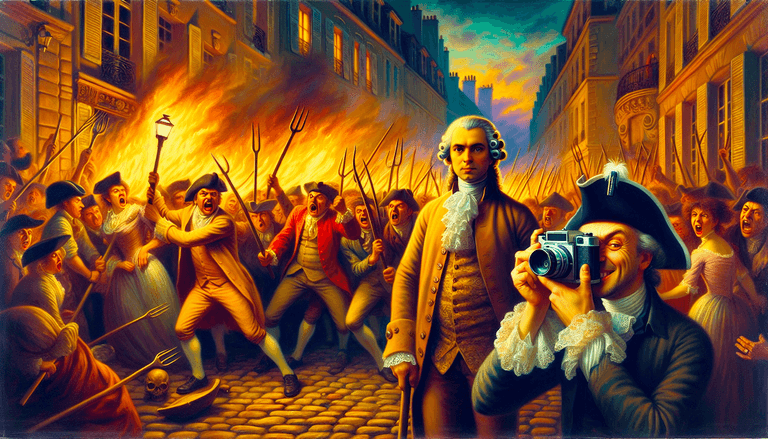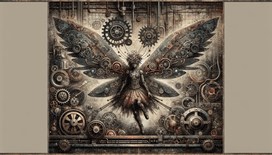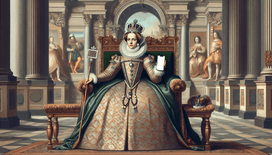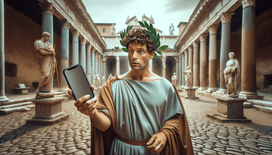Ah, the French Revolution! The time when people traded wigs for guillotines and aristocrats discovered the true meaning of "losing your head over something." But what if this tumultuous period had been driven not just by the cries of "Liberté, égalité, fraternité" but also the pings of Instagram notifications?
Welcome to the alternate reality where powdered wigs and hashtags collide, where revolutionaries wield smartphones alongside pitchforks, and where the Bastille is stormed not just with muskets but with viral content campaigns. Get ready to swipe through history as we imagine la Révolution Française going digital.
#LetThemEatCake: The Hashtag That Sparked a Nation
We begin in the salons of Paris, where Marie Antoinette unknowingly launched the revolution with, "Let them eat cake," now immortalised as a faux pas of epic proportions. Imagine the backlash reaching meme-level immediacy: a snap of the queen enjoying her pâtisserie juxtaposed with starving Parisians. The hashtag #LetThemEatCake would be trending from Versailles to Vendée.
Instagram stories from the streets of Paris would capture the mood, with citizen-journalists livestreaming grievances, rants, and perhaps an impromptu "Say No to Cake" flash mob.
Influencers of the Revolution
Maximilien Robespierre and his ilk would have dominated Stories and Reels, crafting their image as the true influencers of the Revolution. Forget "influence" being measured by likes and followers; these guys literally influenced who kept their head and who did not.
The Jacobin Club could have had an Instagram page to rally supporters, with Robespierre himself doing Q&As about democracy while his loyal followers tagged friends in the comments under slightly gruesome Reign of Terror selfies: "This guillotine is brought to you by freedom! #LibertyOrDeath"
Revolutionary DIY Content
Enterprising sans-culottes would post DIY guides on cobbling together barricades, while others shared tutorials on crafting the perfect tricolour rosette in that rustic yet chic "I’m-an-angry-revolutionary-not-a-peasant" style. "Get this look sans-culotter chic!"
For a bit of light-hearted comedic relief, parody accounts would emerge, meme-ing the heck out of the ongoing chaos. Think "@TheRealLafayette" posting witty takes on recent events: "You down with OPP? Yeah, you know me, I started a revolution in two countries! #HumbleBrag."
A Picture of Equality
One cannot ignore the potential for Instagram to be a platform for visual diplomacy. The meeting between Louis XVI and the National Assembly would require a postworthy handshake captured with perfect lighting. The caption? An earnest but somehow insincere: "They told me not to lose my head, so here’s me keeping it cool with the National Assembly. #PeacefulResolution"
Storming the Bastille, Live!
The iconic storming of the Bastille would have been an Instagram Live event for the ages. Imagine thousands tuning in as the live feed streamed from inside the mob: "Right now we're capturing the Bastille, and you're not going to want to miss this exclusive content. Swipe up to see the best bits of destruction! #BastilleDay #SwipeUpForFreedom"
On a more sobering note, this event’s digital documentation would have captured the raw realities of revolution, stirring emotions and inspiring similar movements across borders.
Keeping up with the Sans-culottes
With so much content, Instagram stories would have been filled with quick expert commentary, much like today’s news slots, but with more flair. "What happened in France today? More at 11, unless there’s another bread riot at 10:30. #FrenchProblems"
The Revolutionaries’ follower count would multiply overnight, accountability increased as citizen journalists (guillotine correspondents, if you will) brought the revolution to every boulangerie and salon.
The Enduring Legacy
As with all timelines, this version of history would inevitably fizzle into a quieter aftermath, with less turbulent captions like "Coffee and croissants post-Revolution with my favourite former sans-culottes. #ChillinWithTheCrew" becoming the new norm.
Instagram’s algorithms would then be filled with nostalgic photo compilations dubbed "Where are they now? Revolution edition." Perhaps, "Rediscovering Robespierre" might ringtone our push notifications, wondering what might have happened had ink and parchment been pixels and posts.
Though one might speculate about the perils of selfie sticks at guillotines, the exaggerations, and social media ‘debates,’ let’s not lose our heads over the potential for engagement and explosive content had Instagram existed during the French Revolution. After all, in a world where even bread can spark a revolution, imagine how far-reaching a single hashtag could go!







